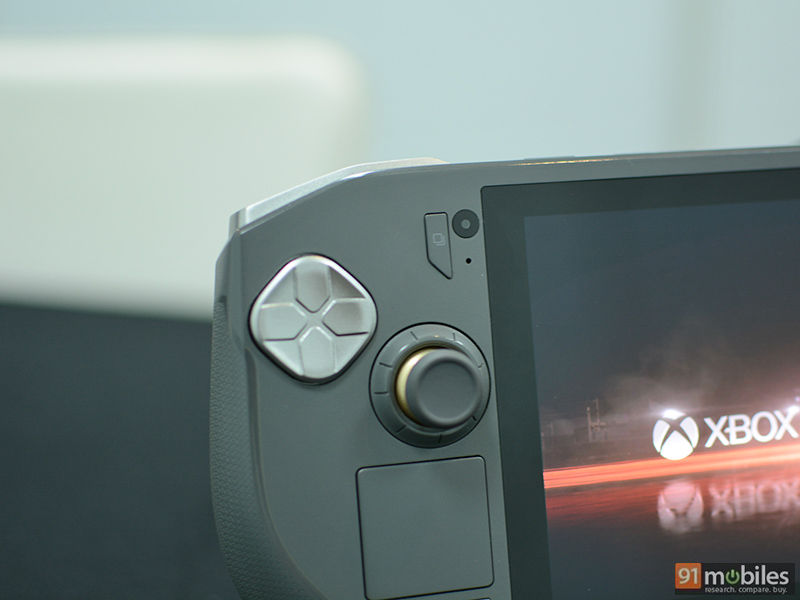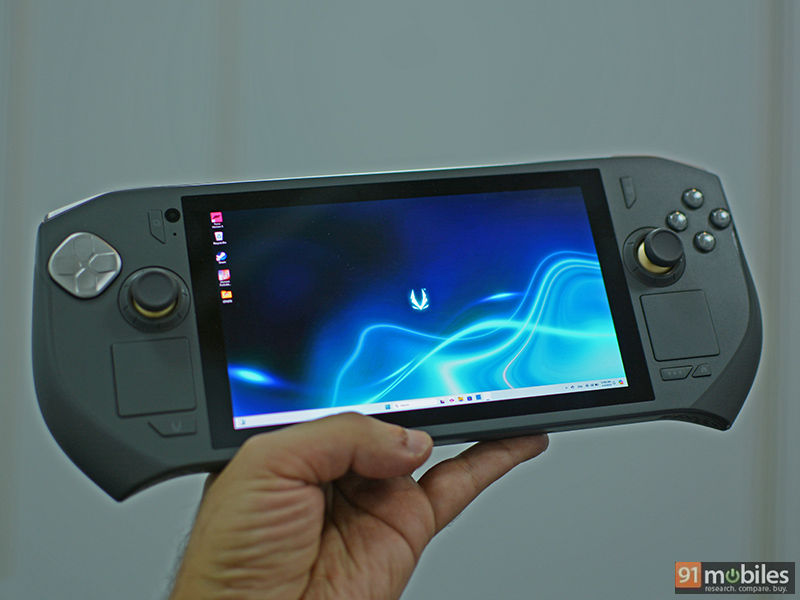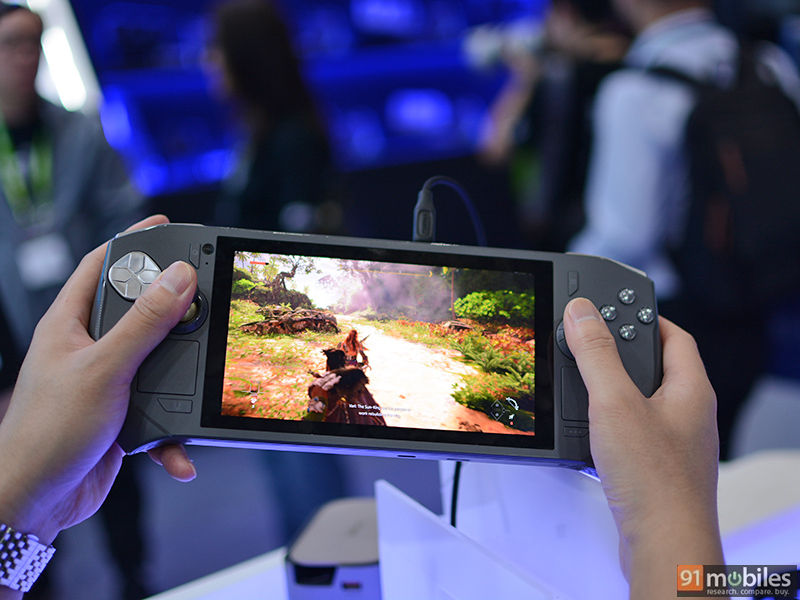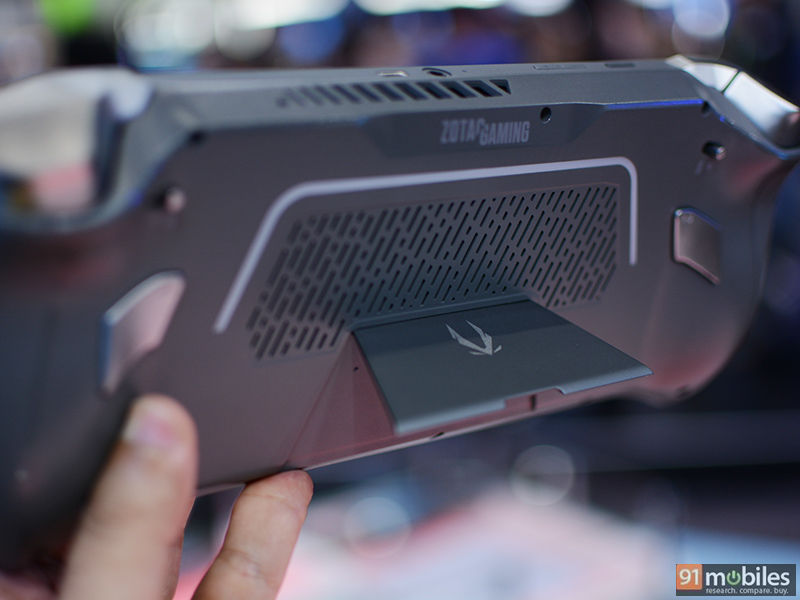
This year’s Computex expo saw a wide range of announcements from major brands in the computing industry and one of the most unexpected launches came from Zotac. Better known for its GPUs and mini PCs, the company is preparing to launch its own iteration of a handheld gaming PC, competing with the likes of Valve’s Steam Deck, MSI Claw, and the ASUS ROG Ally.
The new Zotac Zone handheld gaming PC feels exciting in terms of the specifications and also packs quite few interesting features. I was lucky enough to get an early preview of the Windows-based handheld and here’s what I think about it.
Table of Contents
Design
At first glance, the Zotac Zone looks almost like a prototype, mostly due to its dull grey aesthetics. Having said that, I was happy to see the company offering a colour scheme which is parallel to its mainstream lineup of graphics cards. Notably, it isn’t the most portable handheld on the market with dimensions of 310 x 135 x 40mm, making it larger than the ASUS ROG Ally (280 x 111 x 32.4mm) and the Steam Deck (298 x 117 x 49mm).
It comes with a soft plastic finish all around with a glass piece covering the display while the edges have a texture to improve the grip. All the buttons including the Hall effect joysticks felt solid and the overall finish for a pre-production unit felt more than acceptable.

In terms of the button layout, there is a D-pad, twin trackpads, XYAB buttons and a bunch of additional keys for various functions. I absolutely loved the idea of having rotating jog dials under joysticks which can be configured for various functions, and by default allow you to quickly adjust the volume. The shoulder triggers are well implemented with a two-stage adjustable setting switch, and you get a pair of programmable macro buttons at the back.
The handheld also comes with a built-in kickstand which feels a little flimsy, but it is nice to have if you want to prop it on a desk. At the top there are dedicated buttons for power and volume as well as a 3.5mm audio jack and USB 4.0 Type-C port. At the bottom, there is an additional USB 4.0 Type-C port and microSD card reader. Having USB ports on the top and bottom is actually convenient as it allows you to charge the device in a more flexible way.
Display
The Zotac Zone features a 7-inch 1080p 120Hz OLED screen with a peak rated brightness of 800 nits. In my short period of using the handheld, I found the display to offer a good amount of sharpness and it also felt bright enough, at least for indoor usage. The only issue is that it doesn’t support variable refresh rate, something that has been appreciated on the Steam Deck OLED.

Specifications and performance
The Zotac Zone is powered by an AMD Ryzen 7 8840U “Hawk Point” processor with Radeon 780M graphics, which is similar to the Ryzen Z1 Extreme chip as seen on the ROG Ally. The chip has 8 cores, 16 threads, a boost clock speed of 5.1GHz and even a dedicated NPU to help with AI workloads.
Zotac currently has only one configuration with a 512GB PCIe 4.0 SSD and 16GB of LPDDR5x-7500 RAM. Upon asking if the SSD is user upgradeable, the representative said that they don’t really have final plans if they will be taking that route. However, the company does have plans to launch a dock accessory which includes additional ports and an M.2 slot for SSD storage expansion.
The handheld comes with a 48Whr battery, which is slightly bigger than the ROG Ally (40Whr) and slightly lower than the Steam Deck OLED model (50Whr). Expect about 75 minutes of non-stop gameplay on a single charge, although I need to properly test that before coming to any conclusions. Notably, ASUS is bringing the refreshed Ally X which is going to feature a substantially bigger 80Whr battery unit.
Final words
The Zotac Zone is a lot like the Steam Deck in terms of look and feel, only running on Windows. Early impressions are positive, if only the company can improve on refining or optimising the performance. It is too early to say if it will be a better option over the existing handheld consoles on the market, but it is clear that Zotac is headed in the right direction.

Expected to launch by September or early October, the Zotac Zone will have an estimated price of $700 (Rs 59,000 approximately). While there is no confirmed launch period for the Indian market, a company representative assured that they are definitely considering the options. In terms of accessories, Zotac will be offering a carrying case and the above-mentioned dock.



![Best camera phones under Rs 20,000 [June 2024]: OnePlus Nord CE 4 Lite, Realme Narzo 70 Pro, POCO X6, and more Related Article](https://www.91-cdn.com/hub/wp-content/uploads/2024/06/Best-camera-phones-under-Rs-20000.png?tr=h-110,q-100,pr-true)









![Best camera phones under Rs 20,000 [June 2024]: OnePlus Nord CE 4 Lite, Realme Narzo 70 Pro, POCO X6, and more Best camera phones under Rs 20,000](https://www.91-cdn.com/hub/wp-content/uploads/2024/06/Best-camera-phones-under-Rs-20000-100x70.png)